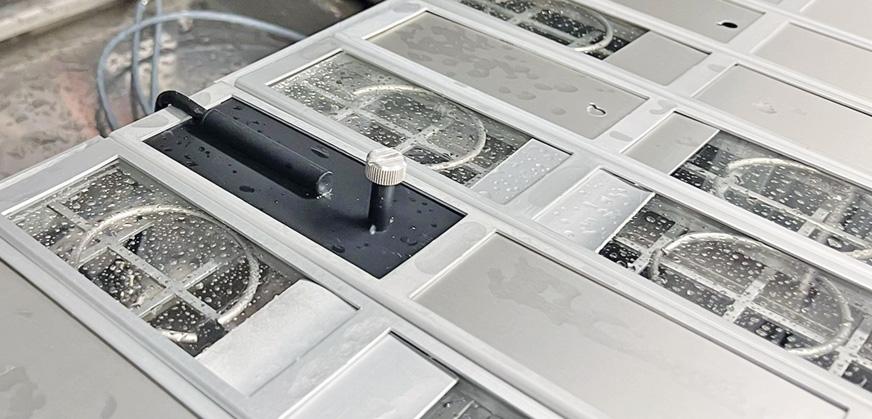Black Panel Temperature Control: Webinar Recap
Blog
Last Updated 2025
Accelerated laboratory weathering testing is used widely for evaluating the durability of materials under simulated environmental conditions. Nearly all accelerated weathering tests use a Black Surface Temperature Sensor, or Black Panel, to control test conditions repeatably. Q-Lab's Technical Marketing team recently presented a webinar explaining how black panels are used in xenon arc and UV fluorescent testing, and how to select the best type for your weathering testing program.
Black Panel vs. Insulated Black Panel (IBP)
It's important to note the difference between an Uninsulated Black Panel (BP, also simply called a Black Panel) and an Insulated Black Panel (IBP or Black Standard). Because BP are commonly specified in ASTM standards and IBP in ISO standards, the geographic location where the test takes place often dictates the temperature sensor being used - Black Panels are commonly used in the USA, while Insulated Black Panels are more commonly used in Europe. However, a more scientific way to select the right black panel is to match the temperature sensor type to the material being tested. During the presentation, Q-Lab provided guidance on when to use each panel type in either xenon arc or UV fluorescent testing in order to generate the most realistic conditions. In general:
- Uninsulated Black Panel temperature sensor is a good choice when testing conductive materials, like paint on metal surfaces
- Insulated Black Panel temperature sensor is best when testing insulating materials, like plastics
Data was presented during the webinar showing that selecting the right black panel can help align programmed test temperatures with actual specimen temperatures. In addition to the material type, the test configuration can affect this selection as well. Exposure testing of three-dimensional specimens in a QUV accelerated tester, for instance, almost always benefits by choosing IBP control.
Temperature Ramping
The webinar concluded with a case study looking at how the speed of temperature ramping between steps in a test cycle can affect results. Ths specific example was for yellowing of polysytrene and polycarbonate, materials known to be sensitive to both light and heat, when running SAE J2527. To learn about this case study in-depth, watch the webinar recording at Q‑Lab.com/Webinars.
If you have any questions about temperature control, or any other aspect of accelerated or outdoor weathering testing, our team is here to help!
